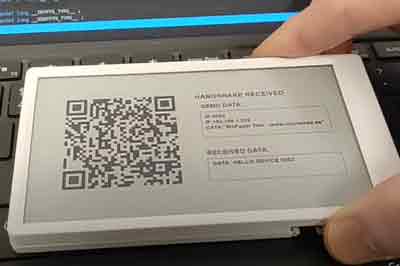As some of you already know, one of the gifts that the kings have brought me is an M5Paper. I must have behaved very well. And, of course, it’s time to play a little with it and see how far we can take it.
For those of you who don’t know, the M5Paper is basically a device with an ESP32 (2 cores, Wifi + BT) and a 16-color 4.7” e-ink touchscreen.
E-ink screens have something special about them, and I think they have untapped potential in industry 4.0, due to their paper-like readability and low power consumption.
The first proof of concept is to take advantage of its ability to generate barcodes or QR codes, which can later be read by a computer or traditional reader, to function as a “Kanban card”.
And the result looks something like this.
Let’s explain what we are seeing. The M5Paper generates a QR code and displays it on the screen. Nothing really new here, there are even examples from the manufacturer on how to do it.
In this QR code, I have inserted a Json file containing the necessary data to connect to the device (ID, IP) and a small payload. In this demo, simply “M5Paper Test - www.luisllamas.es” (with a little watermark, since we are
This code is read from a computer with an application written in C#, and the software uses the connection data read in the QR to establish communication with the device (handshaking) and send it more information. In the demo “HELLO DEVICE {ID}“.
In a real environment, the e-ink screen would receive data such as a manufacturing order, the next station to go to, or whatever we want. Then it would generate another QR (if necessary) to chain actions.
The interesting thing about this solution is that it is practically “infrastructure less”. You don’t need to register the device, or configure IPs, … practically nothing.
Of course, there are other ways to identify the proximity of a device, such as BT beacons, etc. But this one is relatively easy, robust, and flexible. It is also a simple way to integrate with legacy systems that currently use barcode readers.
Well, a little (and quite fun) test that might inspire you. In the next project, we will see how to display graphic information on the e-ink screen. Until next time!
